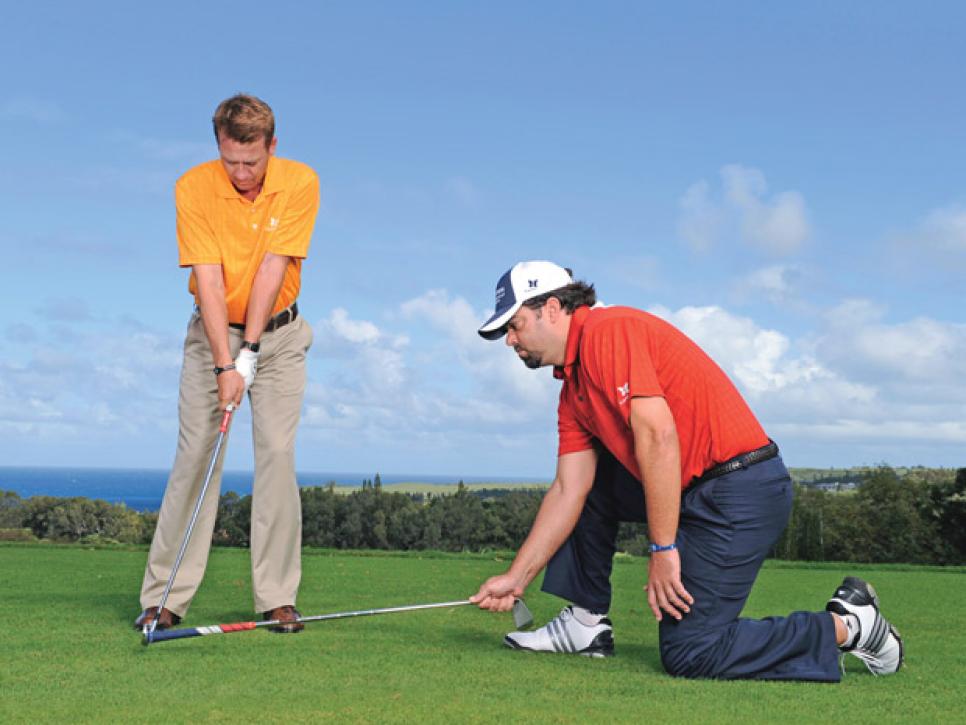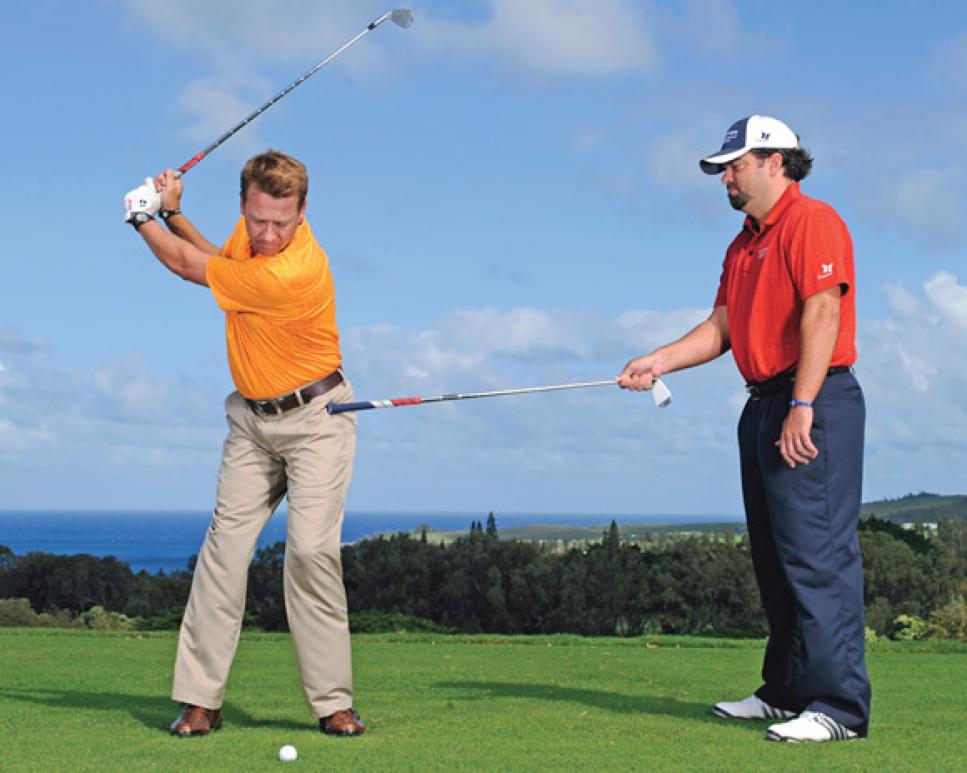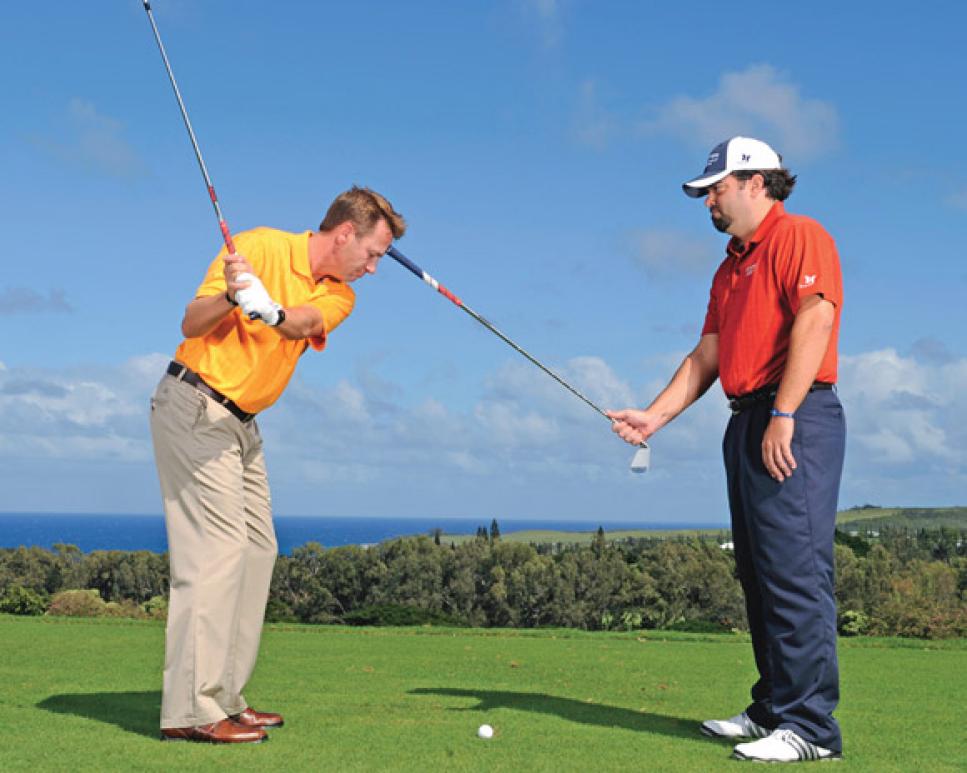Instruction
4 Faults Fixed

Before I show you how to improve your swing, try this: Stand in a door frame, arms braced against the sides. Press hard against the frame for 30 seconds and then step out of the doorway.
I bet your arms involuntarily rose, didn't they? By keeping them pinned down, it became effortless to raise them. You just learned opposite training, and it's one way I get students to make a better swing. Whatever I'm trying to get them to do, I have them first feel pressure in the wrong direction. Here are four common faults and how to use opposite pressure to correct them.
FAULT / POOR TEMPO
1. Whether it's from fear of mis-hitting the ball or the desire to swing harder to gain some distance, many golfers take the club back too abruptly in an effort to start the downswing as soon as possible. A snatchy takeaway is a tempo killer and makes it difficult to synchronize the rest of the swing correctly.
To learn what a slower, smoother back-swing feels like, have someone push your club back quickly as you start your takeaway (above). With the club being forced back, you will begin to resist the pressure and feel a smoother tempo. It reverses the dynamic.

FAULT / HIP SWAY
2. Many amateurs let their hips sway from the target as they get to the top of the swing. When this happens, they typically execute the downswing by making a weak, arms-only slash at the ball. Even worse, this hip sway puts a lot of stress on the lower spine. To correct this, have your friend apply moderate pressure to your left hip at address to remind you not to sway from the target (above). The force against your hip will help you feel where it should be when the club reaches the top of the swing. You'll instinctively resist moving in the wrong direction. When it's time to hit shots, simply re-create that feel.

FAULT / STANDING UP
3. Lots of players rise out of their address posture during the downswing and try to help the ball into the air with the body. But this often produces thin and fat shots and generally poor contact. To make quality contact, retain your address posture, or even squat a little, so you can hit down on the ball and compress it. If you struggle with making solid contact, have light pressure applied to your forehead while you practice your downswing (above). This will give you a great sense of the stand-up move you've been doing, and you'll resist the urge to lose your address posture in a mistaken effort to help get the ball up.

FAULT / EARLY EXTENSION
4. Physical limitations such as weak gluteal muscles and tight calves can force golfers to thrust their pelvis toward the ball when they swing down. When that happens, the body can block the club's path into impact unless it's re-routed. This problem is often referred to as "early extension." In addition to doing exercises such as squats to help the glutes and calves, have your friend hold a club against your left-rear pocket as you hit shots (above). This pressure will help you move that pocket away from the ball, not toward it, as your club swings into impact.
JERRY KING is ranked No. 1 in Hawaii in Golf Digest's Best Teachers by State.
King's favorite cause: The V Foundation For Cancer Research